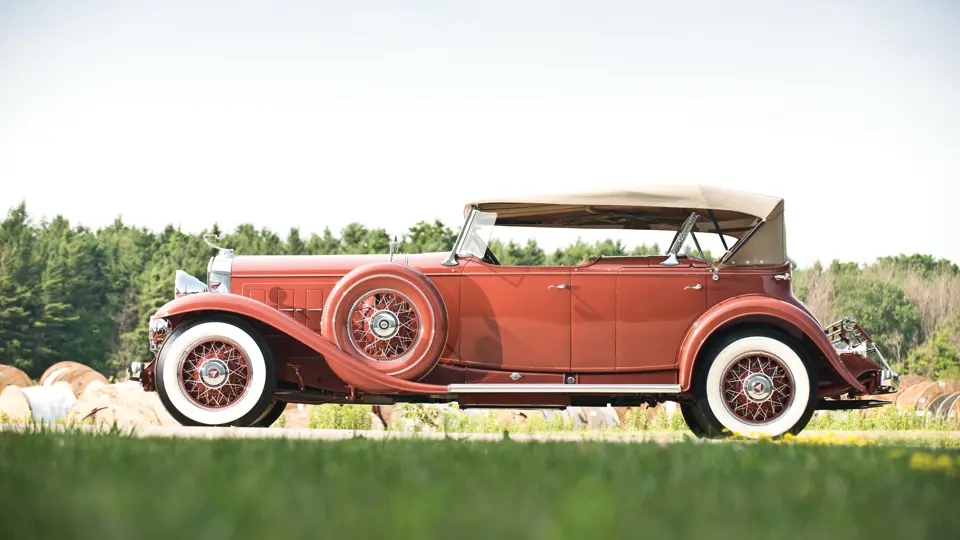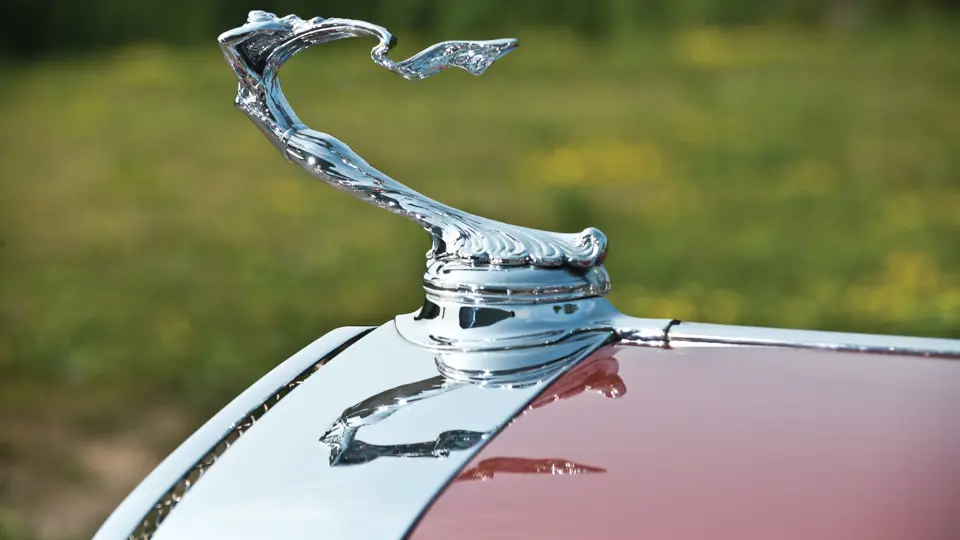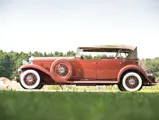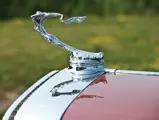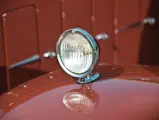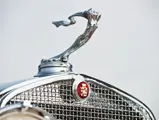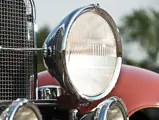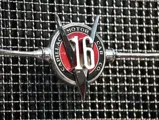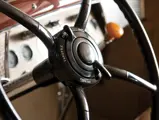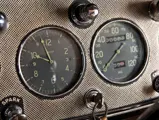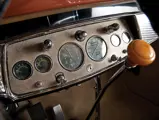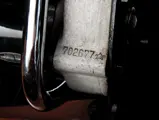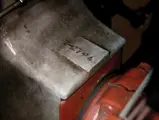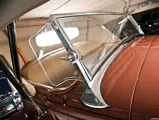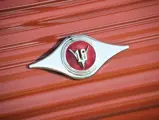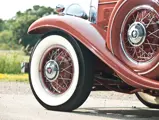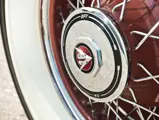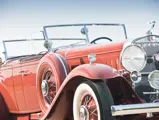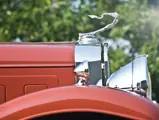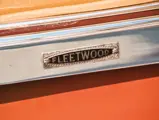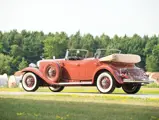Style 4260. 185 bhp, 452 cu in 45 degree overhead valve V-16 engine, three-speed manual transmission, front and rear semi-elliptic leaf springs with hydraulic dampers, and four-wheel vacuum assisted mechanical brakes. Wheelbase: 148"
• One of three examples originally built with dual cowls
• Original engine, body, and chassis
• Single ownership since 1988
Although it is known that there were 85 of Fleetwood’s Style 4260 Sport Phaetons built on the Cadillac V-16 chassis, it is significantly less known that three of these examples were actually built to order with folding rear cowls. They are chassis 702682 with body number 8, 702691 with body no. 7, and the example offered here, chassis 702677 with body number 25. Mounted on the rear cowl, instead of the typical crank-down secondary windshield, is a folding windshield, which has delicate profiles cut out of the bottom of its wind wings, which allows for it to be folded at quite a rakish angle. It is also interesting to note that the 4200 series cars had elegant curved bottom coach sill doors, a styling cue not seen on other less expensive series V-16 bodies. According to a copy of the original build sheet, 702677 was ordered on April 30, 1930, through the famous Don Lee Inc. distributorship of San Francisco, California. “Double Cowl” can be seen specified under the “Extra Equipment” field. The car was also originally ordered with fender-mounted spare tires and wire wheels, and the new owner took delivery on August 30, 1930.
This car next surfaced as advertised for sale in a national automotive magazine in the mid-1950s, being offered by an engine rebuilder who was stuck with an unpaid bill. It was acquired by a pea farmer from Opportunity, Washington, who intended to use the car for Shriner’s parades. To facilitate this, he removed the rear cowl, although he retained it, along with all of the corresponding hardware. Its next owners, Ray and Dorothy Radford, were also from the Evergreen State in Portland. The Radfords acquired the car in 1962, and his historical interest is documented by a letter from the parts department of the Cadillac Motor Car Division to Mr. Radford, in response to an information request about the car. Early on in their ownership, the Radfords properly reinstalled the second cowl and continued to enjoy the Cadillac for the next two decades and toured it extensively through the United States and Canada, until selling it to legendary auto show promoter and SEMA Hall of Fame inductee Robert Larivee Sr., of Pontiac, Michigan, in 1979. Larivee was alerted to the availability of the car by Jim Brucker, who also was a partner in its purchase. It was displayed at Brucker’s Movie World Cars of the Stars Museum, still mostly original and never having been fully restored.
An article written by Bob Larivee in a 1986 article for the CCCA Michigan region magazine Torque, documents the entire experience of finding the car, showing it as is at Pebble Beach in 1981, as a preservation example, and then moving forward with the decision to pursue a restoration, which was performed by the legendary workshop at Harrah’s Automobile Collection, which did restore cars that were not owned by the collection. The total cost for the work performed was a then-staggering $115,000, and the process is documented in a set of photographs, which will accompany the car.
Larivee’s article goes on to describe various decision points throughout the restoration process, as well as the excitement in preparing the nearly-completed car for its second showing at Pebble Beach in 1983. He notes that the car was scored then at 97 points, because the restoration was not fully complete, and the car lacked side curtains, but it still managed to garner Third in Class. After the concours, it was returned to the Harrah workshops for final completion and detailing, ultimately garnering 99.5 points and Best of Show at the Grand Classic at Hudson, Ohio in 1985. The article is a wonderful piece of the history of this car, as it documents the provenance, in addition to conveying the emotional experience involved with acquiring, restorating, and displaying an important collector car. Another authoritative article by historian and noted expert cutaway artist David Kimble was also published in Volume 23, No. 1 of Automobile Quarterly, along with a detailed, illustrated cutaway of the entire car. 702677 was then sold to noted collector John Mozart, followed by a Mr. Paul Quinn, of Boston, Massachusetts. It was purchased by the current owner in 1988.
In addition to the rear cowl with its folding windshield and interesting wind wings, this Sixteen is equipped with Pilot-Ray steering headlights, a radiator stone guard, dual Klaxon horns, a trunk rack, dual taillights, fanned tips on the dual exhaust, and full metal covers with pedestal mirrors on the side-mounts. The quality of the fit and finish of the restoration performed by the Harrah workshops is evident, though it has been a quarter century since the work was completed. It has been well-maintained in its current long-term ownership and has been recently fully detailed and freshened. Of the Style 4260 phaetons built, fifty-two were constructed in 1930 and thirty-three in 1931; a mere three of these were originally equipped as dual cowl examples, making this a unique acquisition opportunity for a car that has good pedigree, touring potential, or, of course, a more thorough freshening to allow it to be shared on the concours field with a new generation of enthusiasts.





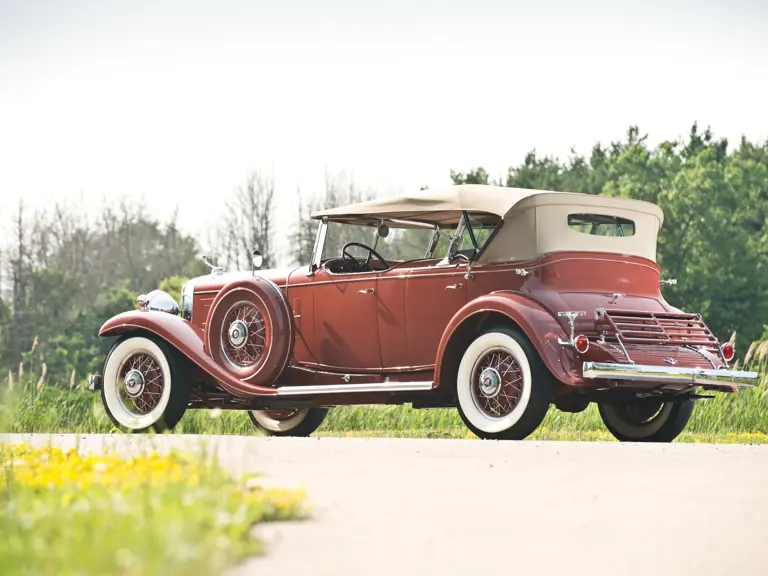

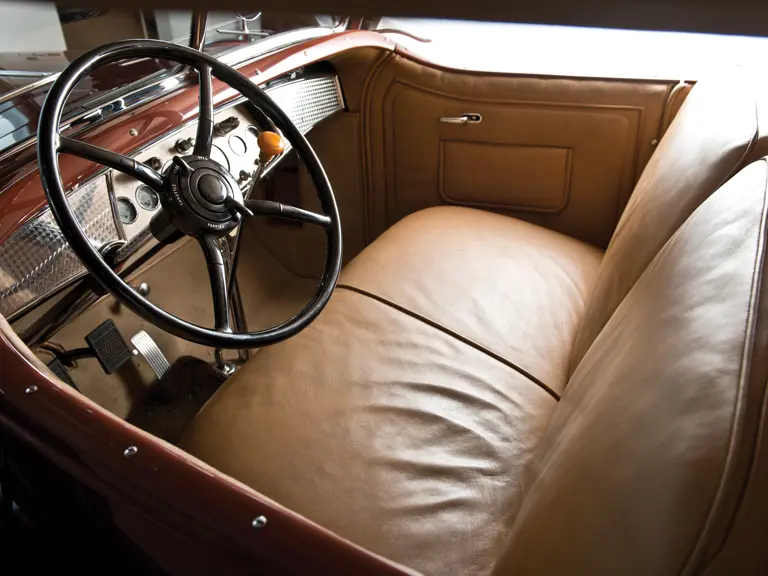
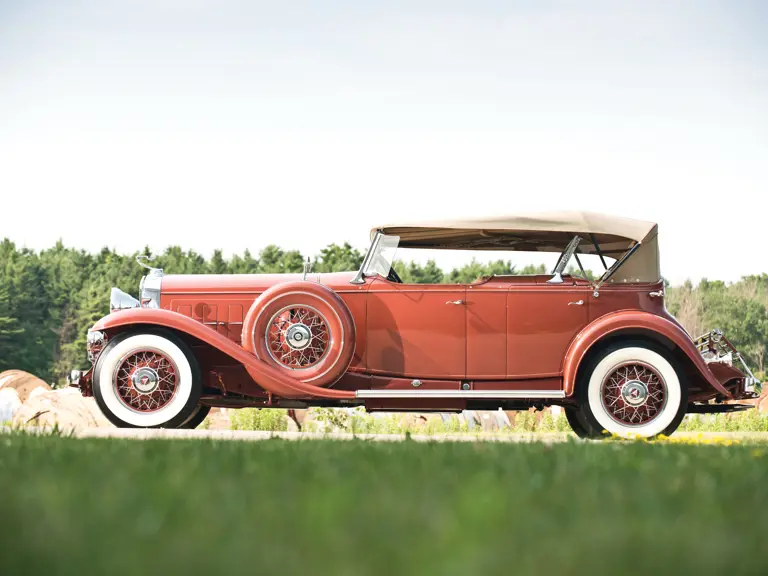

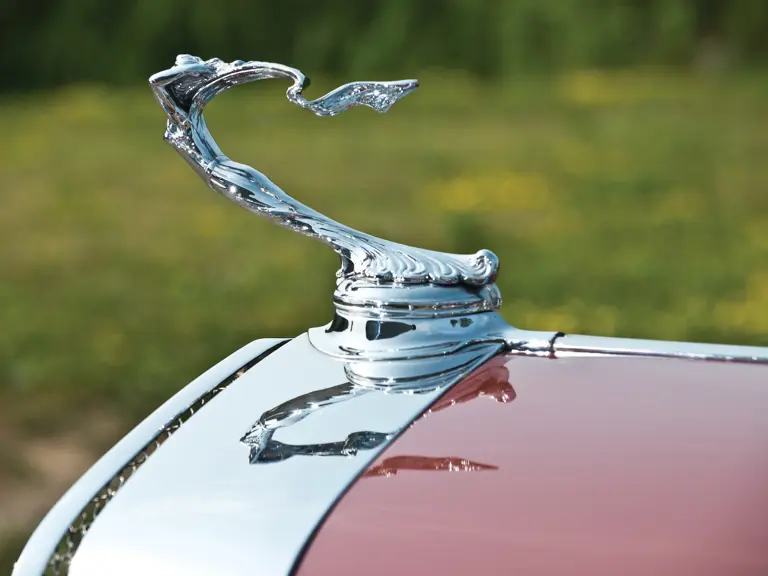
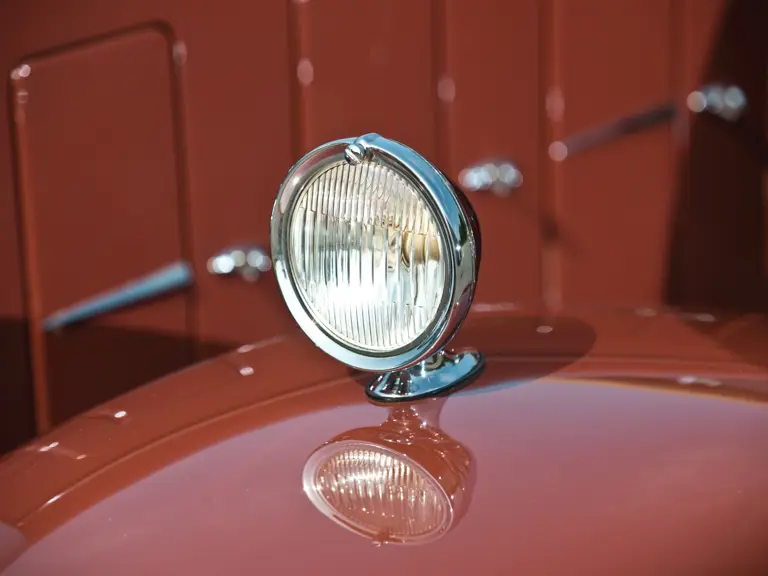
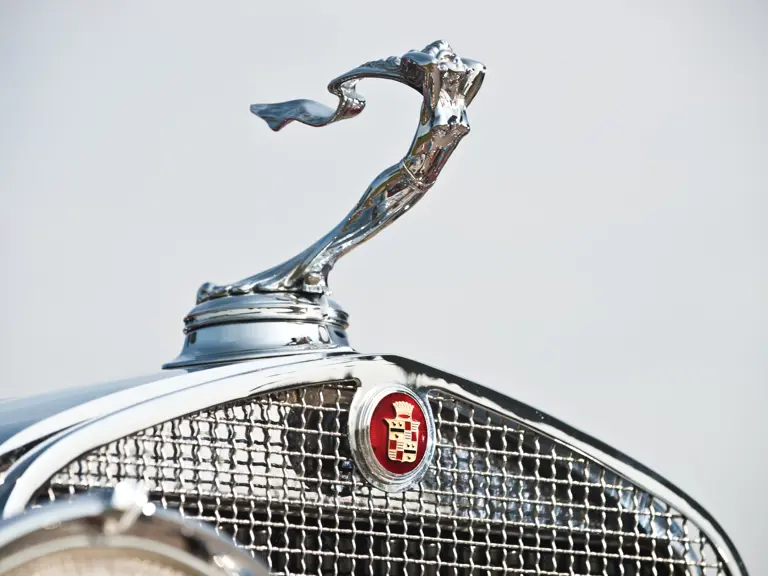


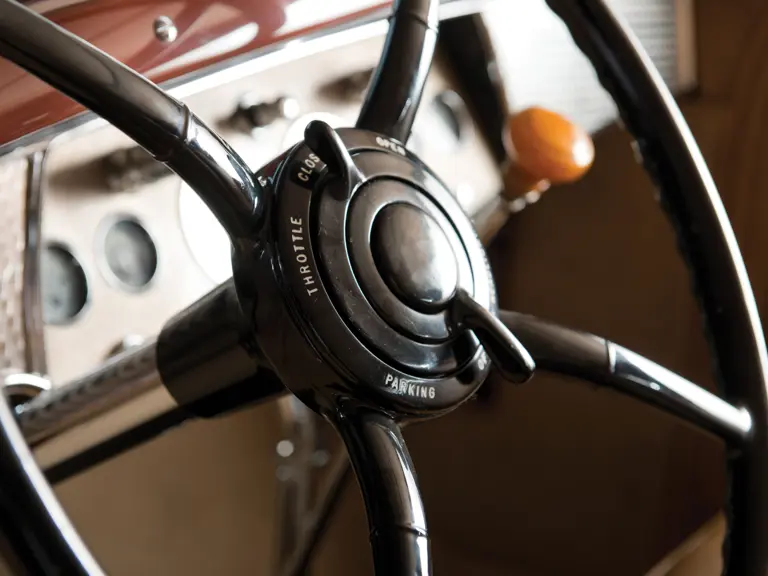
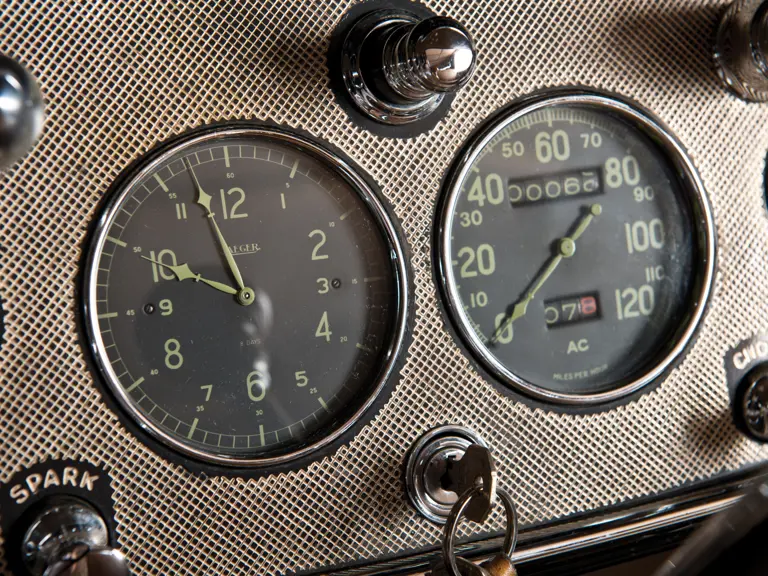
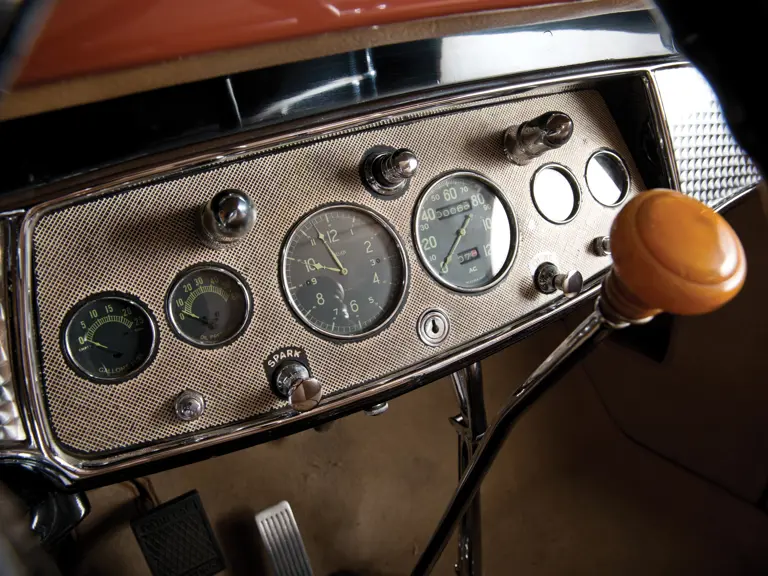

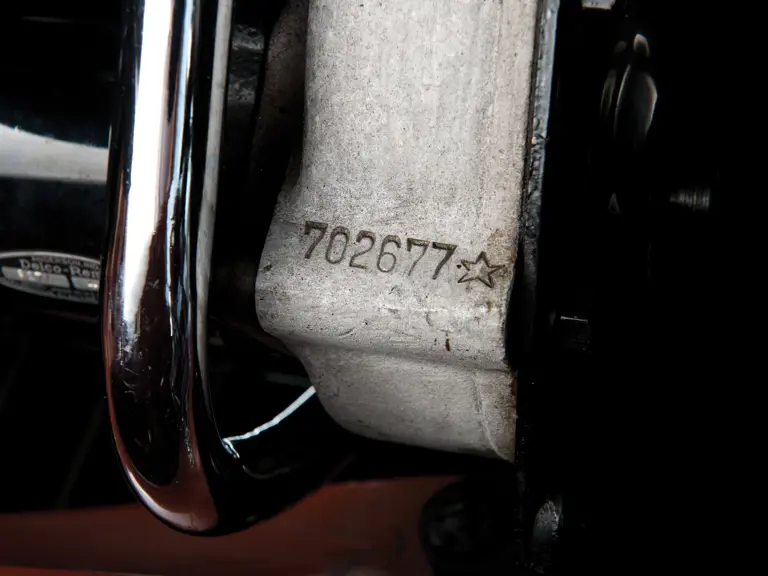
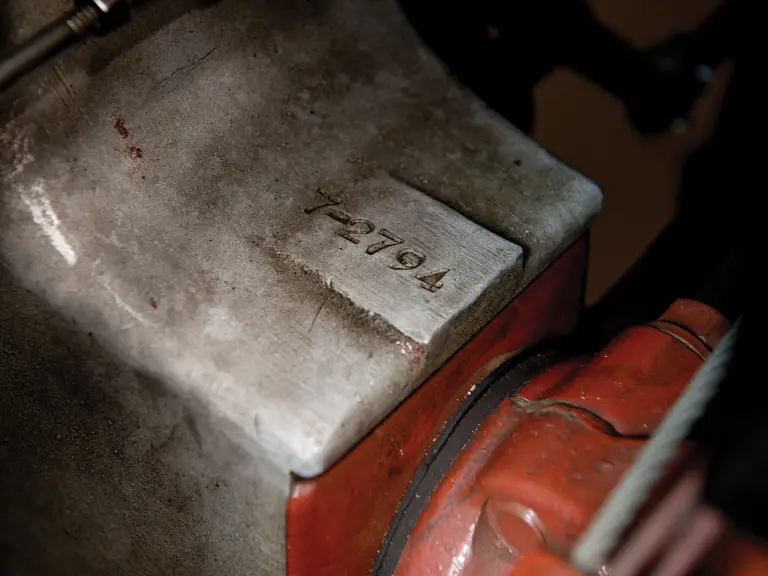
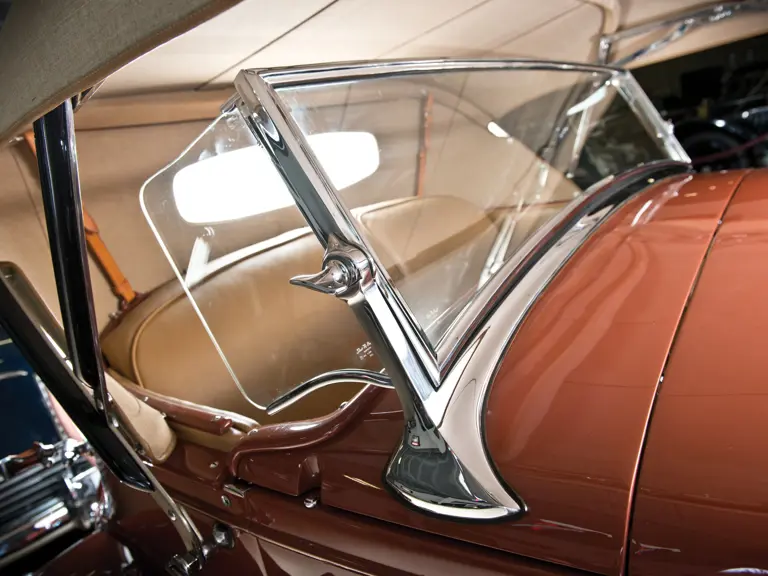

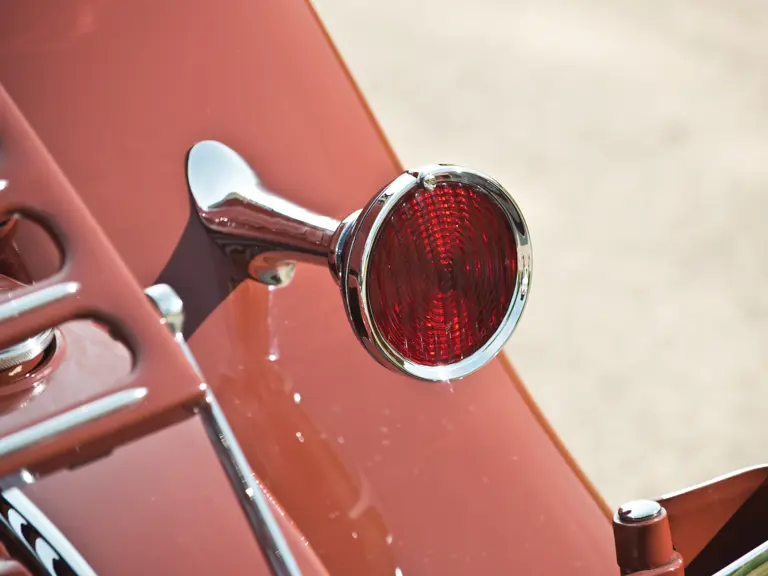
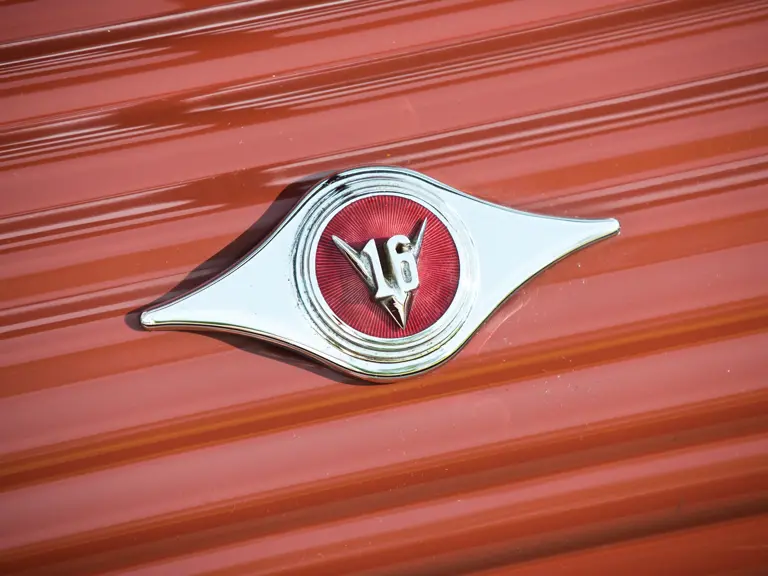


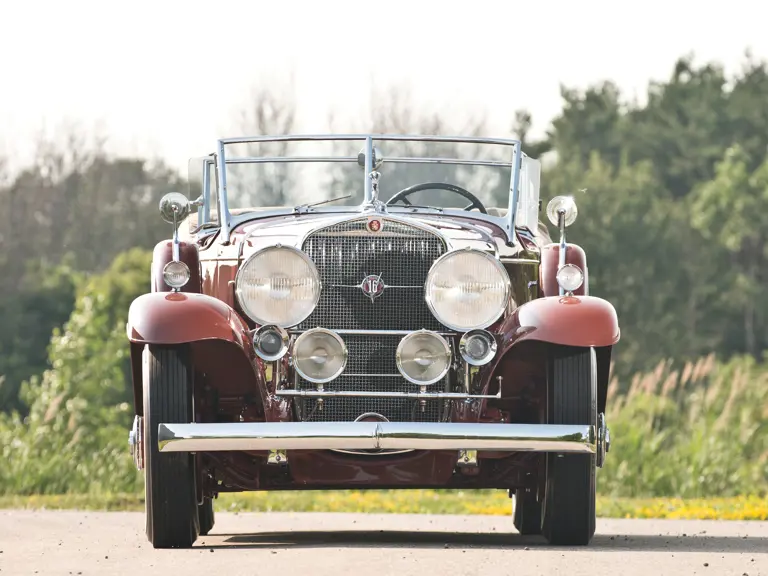


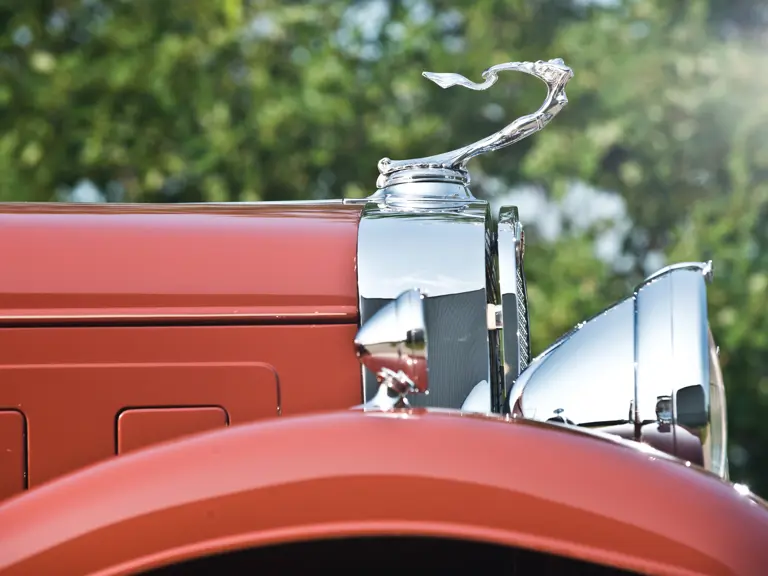
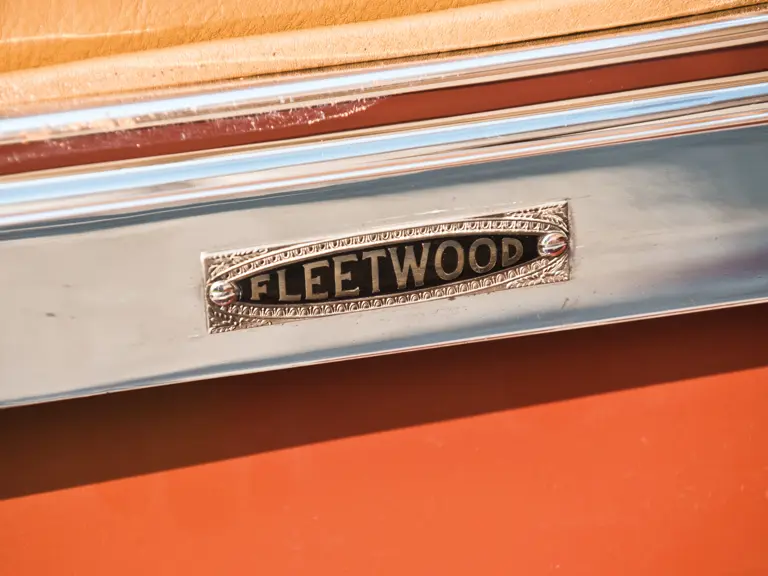
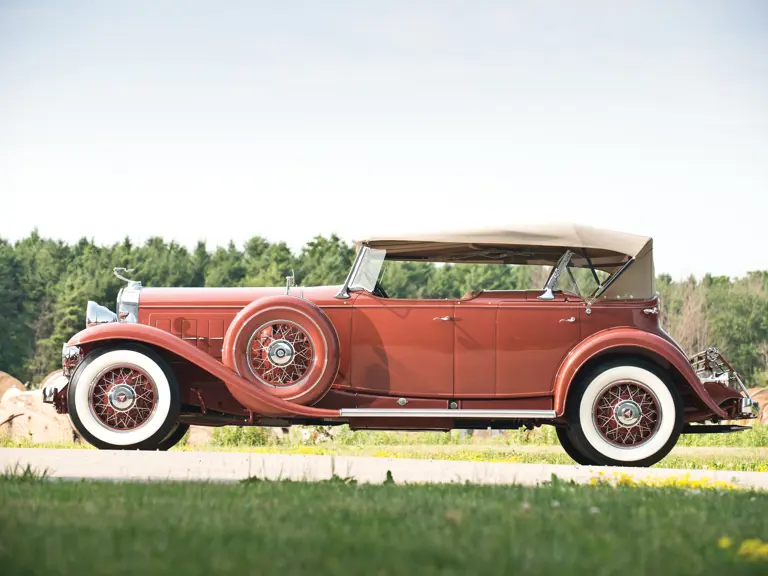

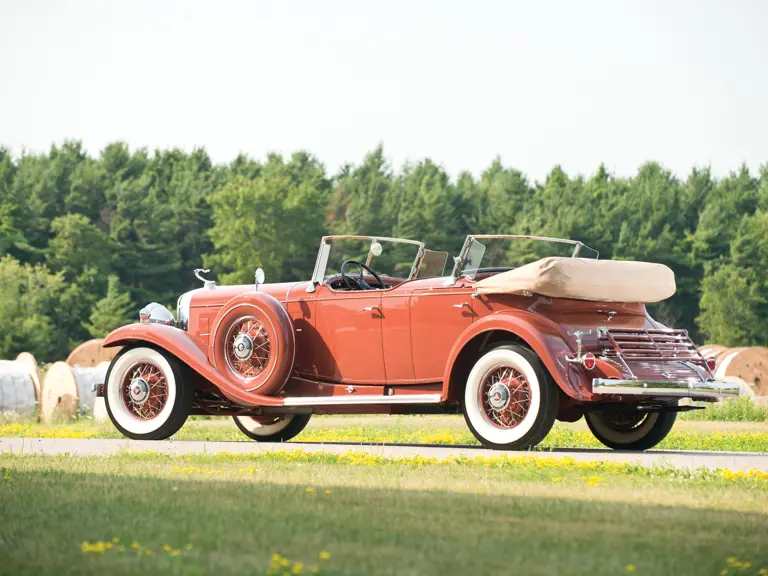

 | Monterey, California
| Monterey, California
